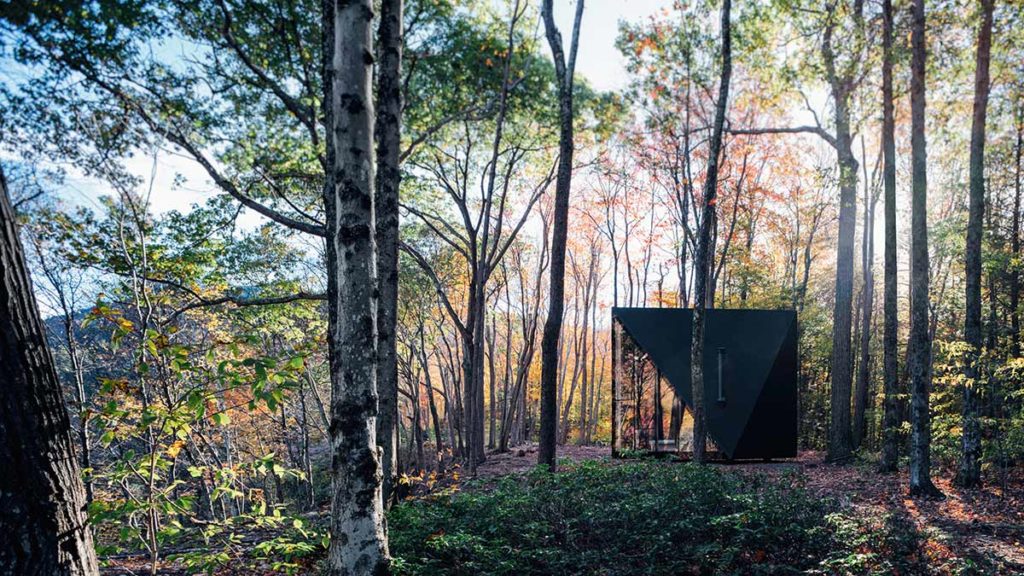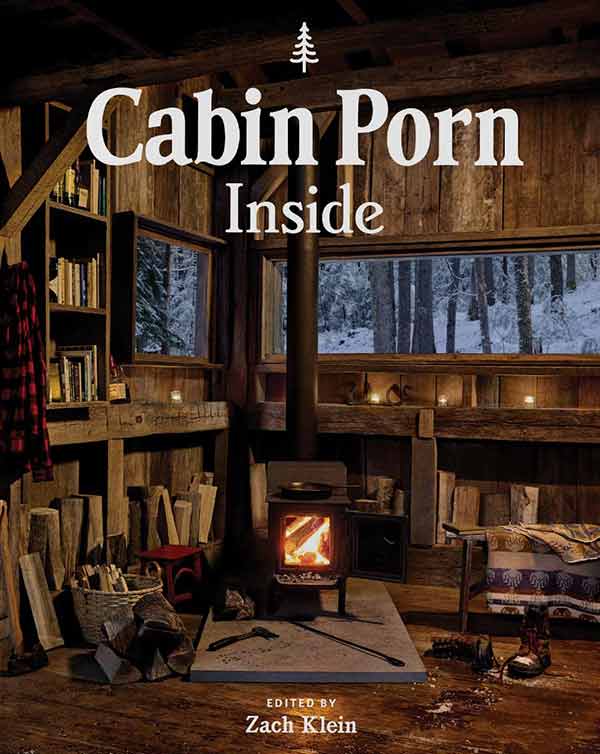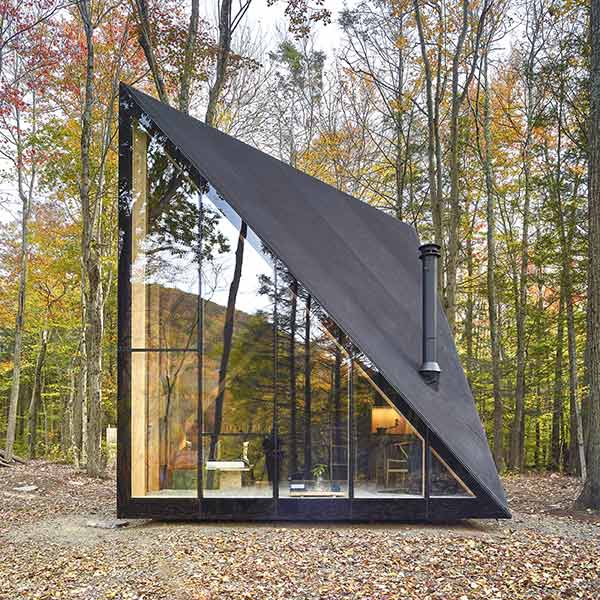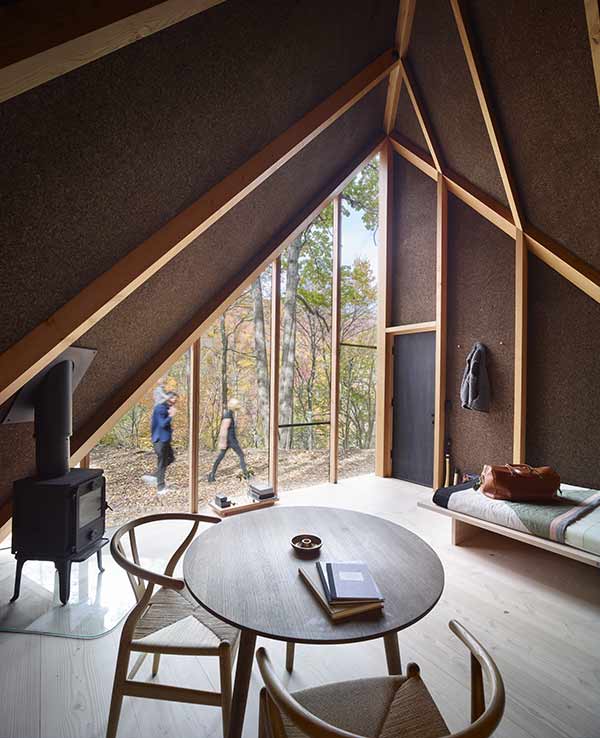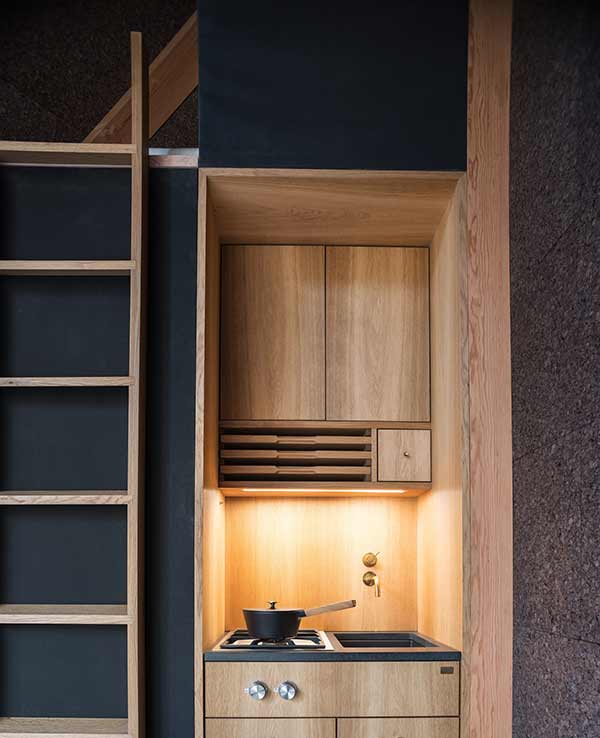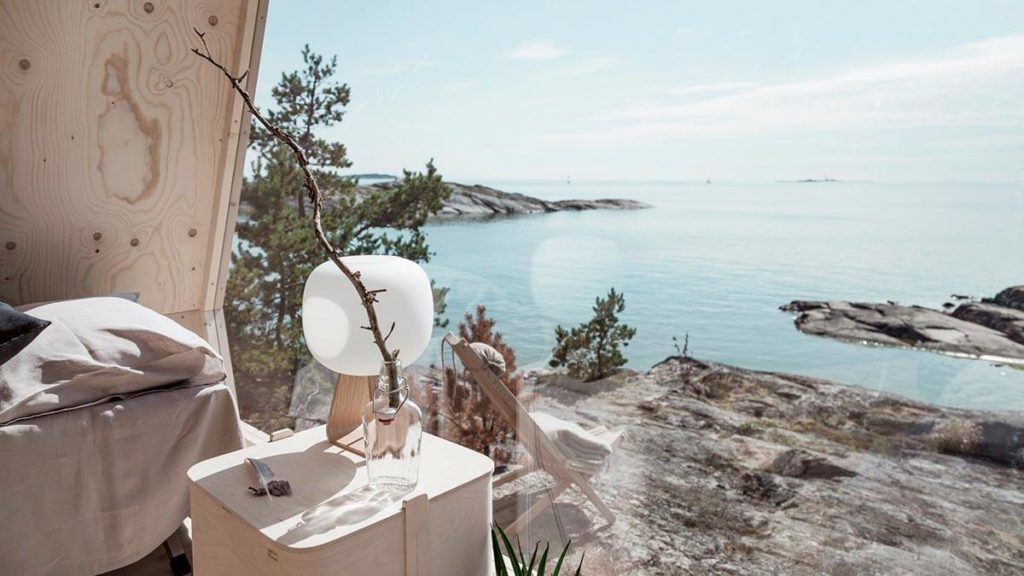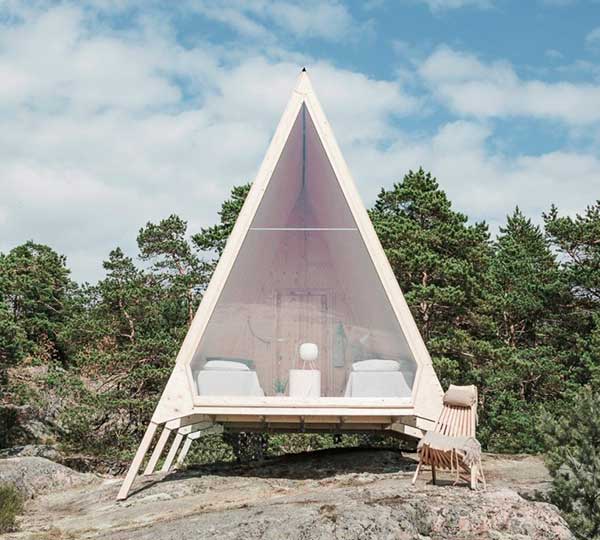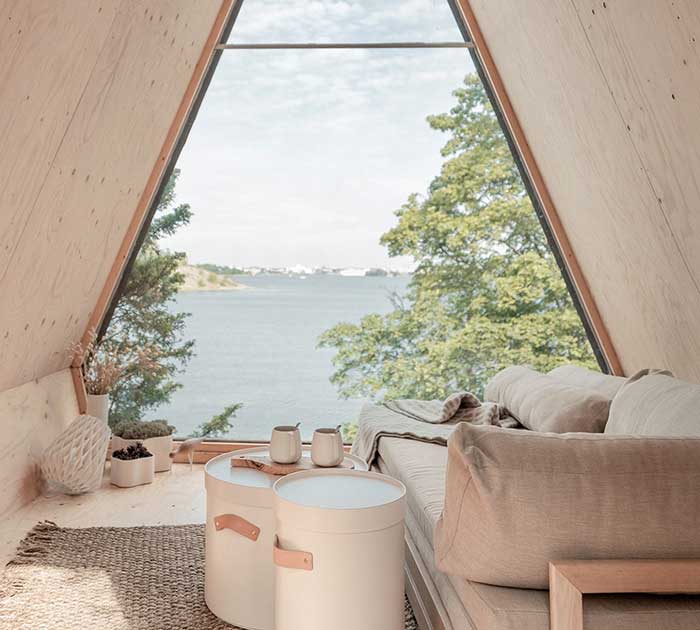Escaping civilization in style
Cabin architecture has now been taken up a notch. The latest off-grid hideaways are created by renowned designers. These avant-garde prefabricated cabins can be set up in the remotest corners of the Earth.
The more digital our lives become, the more analogue our cravings. In our algorithm-driven everyday lives, we are fixated on figures with coloured circles around them. Following their bidding, we immediately check out new content in our social media channels. And rather than enjoying precious moments as they happen, we first weigh them up in terms of their Instagrammability. And when you use the internet to beam yourself to a virtual cabin in the woods, you can be sure that an advert for ready-made log cabins from the local DIY store will pop up on your screen a few minutes later. However, when it comes to dreaming of a life off the grid, log cabins are painfully passé. These days, avant-garde cabin architecture is the “in” way to escape civilization. Leading architectural firms have prototyped cabins that can cater for the needs of even the most style-conscious hipster.
Inspiration for the civilization-weary
For stressed-out city escapists, there is a wealth of both digital and analogue inspiration for life in an offline retreat. As far back as 1854, American philosopher Henry David Thoreau wrote his book “Walden”, a manifesto for simple living in natural surroundings. It is the mother of all simplify-your-life bibles that all conservationists, non-conformists and burnt-out yuppies should have in their rucksacks.
I have, as it were, my own sun and moon and stars, and a little world all to myself. [… As] if I were the first or last man.
Henry David Thoreau
Thoreau built a little hut by Walden Pond, not far from the house of his birth in Concord, Massachusetts. In his earthly hermitage, he went back to basics and left all that was artificial and superficial behind him. In his work, he conjures up images of getting close to nature by reducing life to its existential fundamentals: “I have, as it were, my own sun and moon and stars, and a little world all to myself. [… As] if I were the first or last man.”
The Cabin Porn phenomenon
For those seeking graphic inspiration for close-to-nature hideaways, a rather more modern search term exists: Cabin Porn. Following closely on Food Porn, Ruin Porn, Shoe Porn and Earth Porn, this is the latest X-rated hashtag for the digital voyeur. The Instagram account of the same name belongs to Zach Klein, co-founder of Vimeo and DIY.org.
He started Cabin Porn over ten years ago as a simple Tumblr blog for cabin lovers that proved to be enormously popular. A photobook that has already been translated into seven languages is now being followed up by Cabin Porn Inside, which devotes itself to stylish interiors for wilderness retreats.
Klein clearly hit a nerve with his cabin pictures. Just like the much-hyped Tiny House movement, Cabin Porn conjures up an idyllic vision of a simpler life in the woods. Digital detoxing by chopping wood. Doing nothing in the middle of nowhere – the new luxury of our time.
Avant-garde cosiness
High-profile Danish architectural firm BIG, owned by Bjarne Ingels, describes its Cabin Concept A45 as “hyggelig”. This is an “in” adjective that stems from the Scandinavian concept of hygge, conveying a mood of cosiness and comfortable conviviality. The comfort and design of the angular structure is wholly in keeping with Nordic minimalism. A visible wooden frame construction with natural cork insulation accommodates a Morsø woodstove and handmade Scandinavian designer furniture. The building and all of its furniture are made entirely of biodegradable materials.
The first prototype, with a generous room height of four metres, was built on a 17 m² square base in Upstate New York. The cabin consists of manufactured components that can also be personalized. If required, they can even be put together in the remotest corners of the world. It takes between four and six months to have the various components manufactured.
A life without a carbon footprint
When it comes to hip and hygge cabins, the Scandinavians are the undisputed pioneers. But it doesn’t stop there. With their Nolla Cabin (“nolla” meaning zero), Finnish petroleum company Neste and designer Robin Falck demonstrate that it is possible to go even further. In this case, “zero” stands for the zero emissions produced by the remote dwelling. The solar-powered low-impact cabins are sure to make the hearts of any back-to-nature tree-huggers skip a beat. The energy comes from the sun, while renewable bio-diesel is used for cooking and heating.
The cabin can be transported and assembled without the need for any heavy equipment. Not even screws, power drills or IKEA Allen keys are required. Rather, the individual pieces fit together like a jigsaw puzzle.
The cabin is an experiment to explore how we could live on less, whilst spending more time enjoying the nature around us.
Robin Falck
The prototype can be found on the island of Vallisaari, a 15-minute boat ride from Helsinki, which was uninhabited until 2016. On the unspoilt island, an attempt was made to determine whether it is possible, with the means currently at our disposal, to lead a comfortable life without CO2 emissions. Located atop a lonely cliff, Nolla is a manifesto for a life without fossil fuels and a possible future where tourism is sustainable.
As Robin Falck explains: “The Nolla Cabin is, in essence, an experiment to explore how we could live on less, whilst spending more time enjoying the nature around us. This thought guided every phase of the design process. I like walking and spend lots of time outdoors. And it was there that I realized that a home the size of a tent is all you really need to live in.” A sentiment with which Henry David Thoreau would surely have agreed.
Text: Gertraud Gerst
Translation: Rosemary Bridger-Lippe
Photos: Matthew Carbone / BIG, Jalkia Jattaatta / Neste
